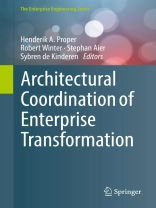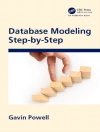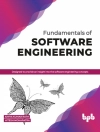Architectural coordination of enterprise transformation (ACET) integrates and aggregates local information and provides different viewpoints, such as financial, structural, or skill perspectives to the respective stakeholder groups, with the aim of creating a consensus and shared understanding of an enterprise transformation among the stakeholders. Its core purpose is to inform decision-makers with both local and enterprise-wide concerns so that the overall transformation goals can be successfully pursued, i.e. reducing inconsistencies and including local decisions in the overarching goals.
This book consists of three major parts, framed by an introduction and a summary. To enable readers to gain a better understanding of the issues involved in real-world enterprise transformations as well as the possible role of architectural coordination and the associated challenges, Part I provides an analysis of status quo of corporate ACET practice. Part II then continues with an exploration of the challenges facing ACET from a theoretical perspective. Based on these challenges, Part III then presents a collection of components for a possible design theory for ACET. Instead of an integrated method, this collection of components constitutes method fragments that can be arranged in different ways depending on the perspective taken, the actual enterprise architecture management approach, the enterprise transformation type and the transformation’s context.
Зміст
1 Introduction.- 2 A major transformation at a global insurance company.- 3 Centralised monitoring of pensions in Greece.- 4 Enterprise coherence in the public sector.- 5 Public services opening up to innovation.- 6 Degrees of change in enterprises.- 7 Enterprise transformation from a social perspective.- 8 More than engineering; The role of subcultures.- 9 The need for a use perspective on architectural coordination.- 10 Involving the right stakeholders – Enterprise coherence governance.- 11 Information requirements for enterprise transformation.- 12 Institutionalisation of ACET – Needs and foundations.- 13 The need for model engineering.- 14 Steering transformations with architecture principles.- 15 The need for explicit decision-making strategies.- 16 ACET constructs.- 17 Transformation intelligence capability catalogue.- 18 Coherence management dashboard for ACET.- 19 Guidelines for architecture models as boundary objects.- 20 The ACET information requirements reference model.- 21Model bundling: Componential language engineering.- 22 Principle-based goal-oriented requirements language.- 23 The EA Anamnesis approach.- 24 Formalising enterprise architecture decision models.- 25 Situational adaptations of ACET.- 26 Conclusion and reflections.
Про автора
Hend
erik
A. Proper is Head of Academic Affairs at the Luxembourg Institute of Science and Technology (LIST) in Luxembourg, and senior research manager within its IT for Innovative Services (ITIS) department. Since 2003, he has been a professor at the Radboud University, Nijmegen, the Netherlands and since May 2017 also an adjunct professor at the University of Luxembourg.
Robert Winter is Professor of Business & Information Systems Engineering at the University of St. Gallen (HSG), Switzerland, and Director of HSG’s Institute of Information Management. His research interests include design science research methodology, enterprise architecture management, transformation management and the management of very large IT projects and programmes.
Stephan Aier is assistant professor at the Institute of Information Management at the University of St. Gallen, where he heads the Architectural Coordination Group. His research interests are in architecture, integration, and transformation management, and he is responsible for fundamental research funded by public research organizations such as the Swiss National Science Foundation as well as for applied research funded by industry partners.
Sybren de Kinderen is assistant professor at the University of Duisburg-Essen, Germany. During the ACET programme, he worked as a post-doctoral research fellow at the Luxembourg Institute of Science and Technology (LIST) in Luxembourg.












